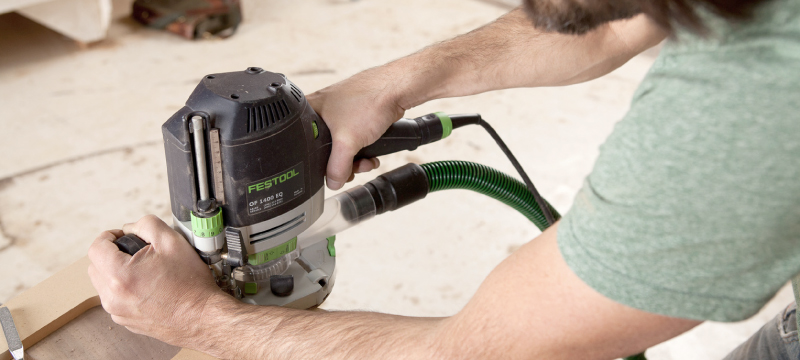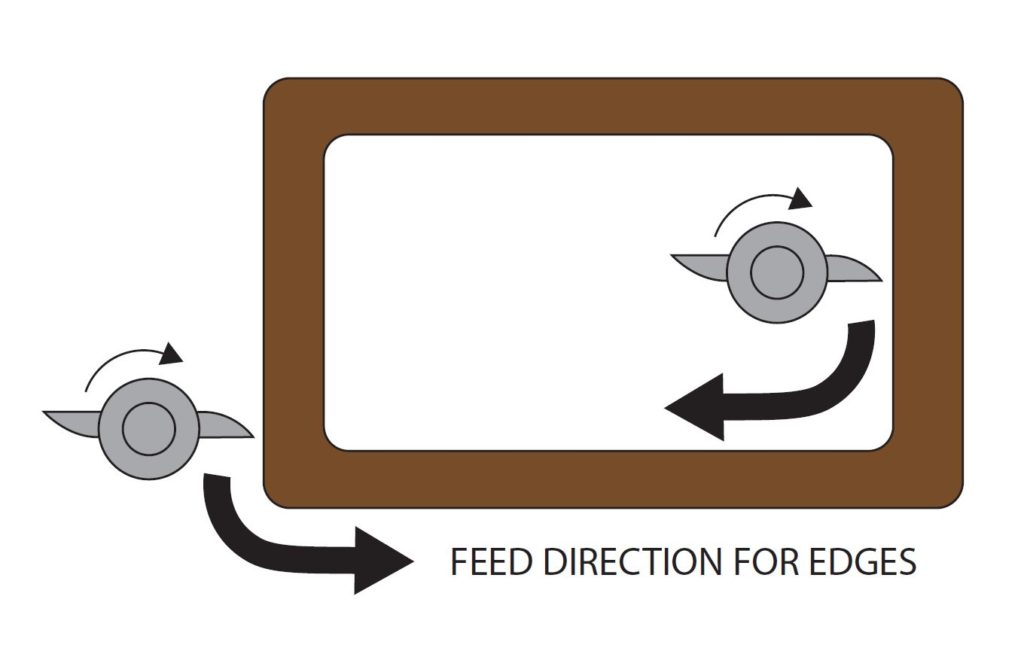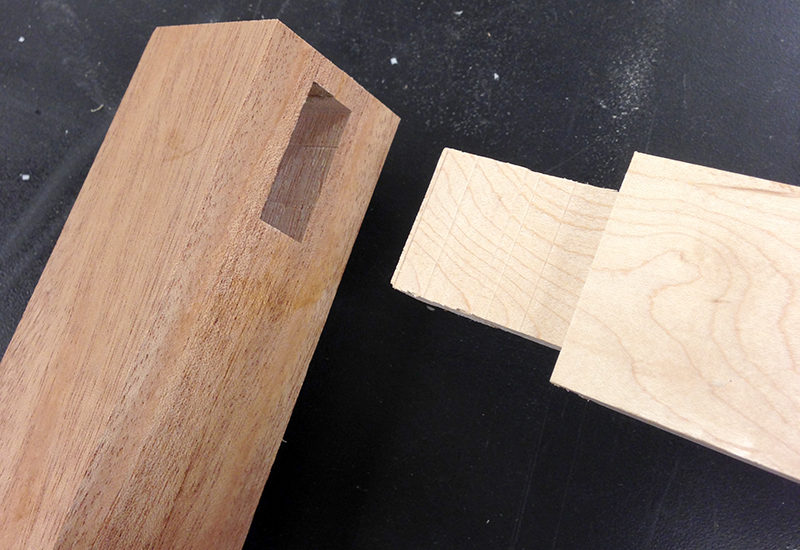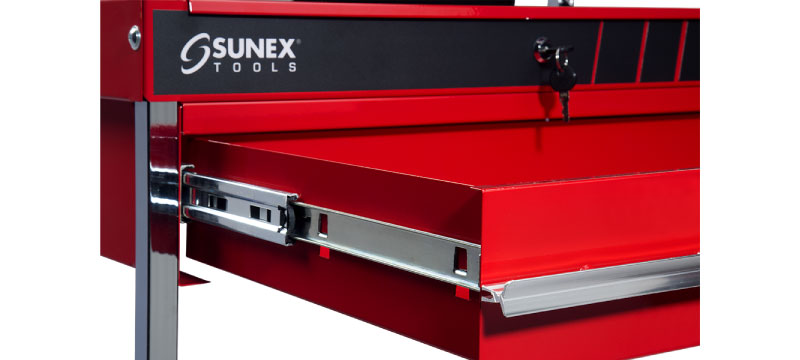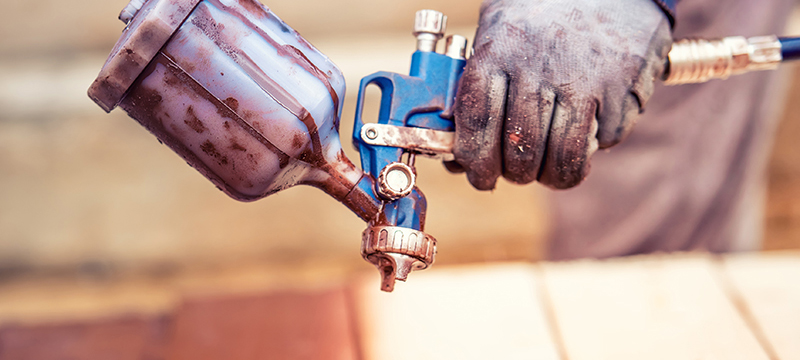Since all routers spin the bit in the same direction, knowing which route you should take may be challenging. Move all handheld routers counter-clockwise when working on the outside edge of a project, as shown in the diagram. If you are routing inside edges, also shown, the direction should be clockwise. If using a router table, feed the wood across a table from right to left. If done incorrectly, the bit you’re using will grab the wood, cause tear out, and increase the possibility of losing control.
Don’t try to be too macho and route everything in one pass. Any cut of 3/8″ or more should be made in multiple passes. The first pass should be a shallow cut. Then, the bit can be raised in each subsequent pass until the final profile is achieved. The router and bit will last longer with multiple passes, and the cut quality will improve. On the other hand, don’t be too timid with your speed. Cutters can hit the surface of the wood about a thousand times each second, creating the potential for friction and heat buildup. This heat can cause burning on the wood, especially when you’re working with lighter hardwoods. So, focus on keeping a steady pace without hesitation as you move the router over the wood to reduce the number of cutter impacts on a given section.

